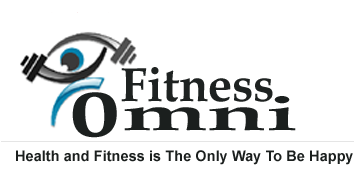Calisthenics, the dynamic form of exercise that leverages your body weight to build strength and flexibility, has gained immense popularity in the fitness world. Whether you’re a newcomer or a seasoned enthusiast, mastering the art of calisthenics requires more than just physical prowess. It entails a deep understanding of the potential pitfalls and common errors that can impede progress and even lead to injury. This extensive guide delves into the intricate details of avoiding these pitfalls, setting the stage for a fruitful and injury-free calisthenics journey.
Table of Contents
1. The Importance of Proper Warm-up and Mobility
Warming up and improving mobility might seem like minor steps, but they form the foundation of a successful calisthenics routine. By neglecting this crucial aspect, you risk subjecting your muscles and joints to unnecessary strain. Engage in dynamic stretching exercises like leg swings, arm circles, and hip rotations to elevate your heart rate, increase blood flow, and improve flexibility. This primes your body for the challenges ahead, reducing the likelihood of strains and injuries.
2. The Peril of Skipping Progression Steps
The allure of mastering advanced calisthenics moves can be irresistible, leading many to bypass fundamental progression steps. This mistake can undermine the effectiveness of your workouts and put you at risk of overexertion and injury. Remember that each exercise builds upon the previous one, creating a seamless progression that conditions your body over time. By mastering the basics before attempting more complex variations, you ensure a strong foundation and minimize the risk of setbacks.
3. The Crucial Role of Proper Form and Technique
Calisthenics places significant emphasis on form and technique. Poor execution diminishes the effectiveness of exercises and exposes you to potential injuries. Take the time to learn proper form through tutorials, workshops, and guidance from experienced practitioners. If being in form is a problem for you, try looking up ‘calisthenics near me’ to help you find people or calisthenic guides. Engaging in exercises with proper alignment will enhance results, prevent imbalances, and safeguard your joints.
4. Embracing Recovery and Rest Days
Overzealousness can lead to neglecting crucial recovery and rest days in pursuit of excellence. These periods are not idleness but vital components of the calisthenics process. Rest allows muscles to repair and grow stronger, preventing burnout and overtraining. Incorporate active recovery techniques, such as foam rolling and light stretching, to maintain flexibility and promote circulation on rest days.
5. The Power of Consistency
Consistency is the linchpin of progress in any fitness endeavor, and calisthenics is no exception. Developing a consistent workout routine tailored to your goals is paramount. While it’s tempting to push for intense daily workouts, this approach leads to burnout over time. Consistency fosters gradual growth and steady progress, yielding superior results compared to sporadic, intense sessions.
6. Balancing the Act: Overtraining and Listening to Your Body
Overtraining is a common pitfall, often fueled by a desire to expedite progress. However, this approach can backfire, leading to physical exhaustion, diminished performance, and injuries. Listening to your body’s cues is essential. If you experience prolonged fatigue, persistent soreness, or a decline in performance, it’s time to recalibrate. Prioritize rest, engage in active recovery, and adjust your training intensity.
7. Fueling Your Performance with Nutrition and Hydration
Neglecting proper nutrition and hydration can undermine your calisthenics efforts. A balanced diet rich in protein, carbohydrates, and healthy fats provides the fuel your body needs for intense workouts and efficient recovery. Adequate hydration ensures optimal muscle function, energy levels, and overall performance. Prioritize consuming nutrient-dense foods and maintaining proper hydration to sustain your calisthenics journey.

8. The Quest for Variety
Repetition breeds stagnation, both in motivation and physical gains. Failing to incorporate variety into your calisthenics routine can lead to boredom and overuse injuries. Embrace diversity by exploring different exercises, progressions, and variations. This approach targets various muscle groups, keeps your routine engaging, and stimulates continuous growth.
9. Escaping the Comparison Trap
Constantly comparing your progress to others can be detrimental to your mental state and motivation. Every individual’s calisthenics journey is unique, influenced by factors ranging from genetics to training history. Instead of fixating on others, focus on your personal growth, celebrating your achievements, and using others’ accomplishments as inspiration.
10. Practicing Patience and Setting Realistic Expectations
Impatience and unrealistic expectations are obstacles that can hinder your calisthenics journey. It’s important to acknowledge that significant progress takes time. Instead of seeking rapid results, approach your journey with patience and dedication. Celebrate incremental successes and use them as stepping stones toward your ultimate goals.
Conclusion
Embarking on a calisthenics journey requires a combination of physical effort, mental discipline, and a keen awareness of the potential pitfalls. By addressing these common mistakes with mindfulness and dedication, you’re setting yourself up for a fulfilling and fruitful experience. As you navigate the intricacies of proper warm-up, balanced progression, impeccable form, and adequate recovery, remember that calisthenics is not just about the exercises; it’s about cultivating a sustainable, rewarding lifestyle that promotes physical and mental well-being.





